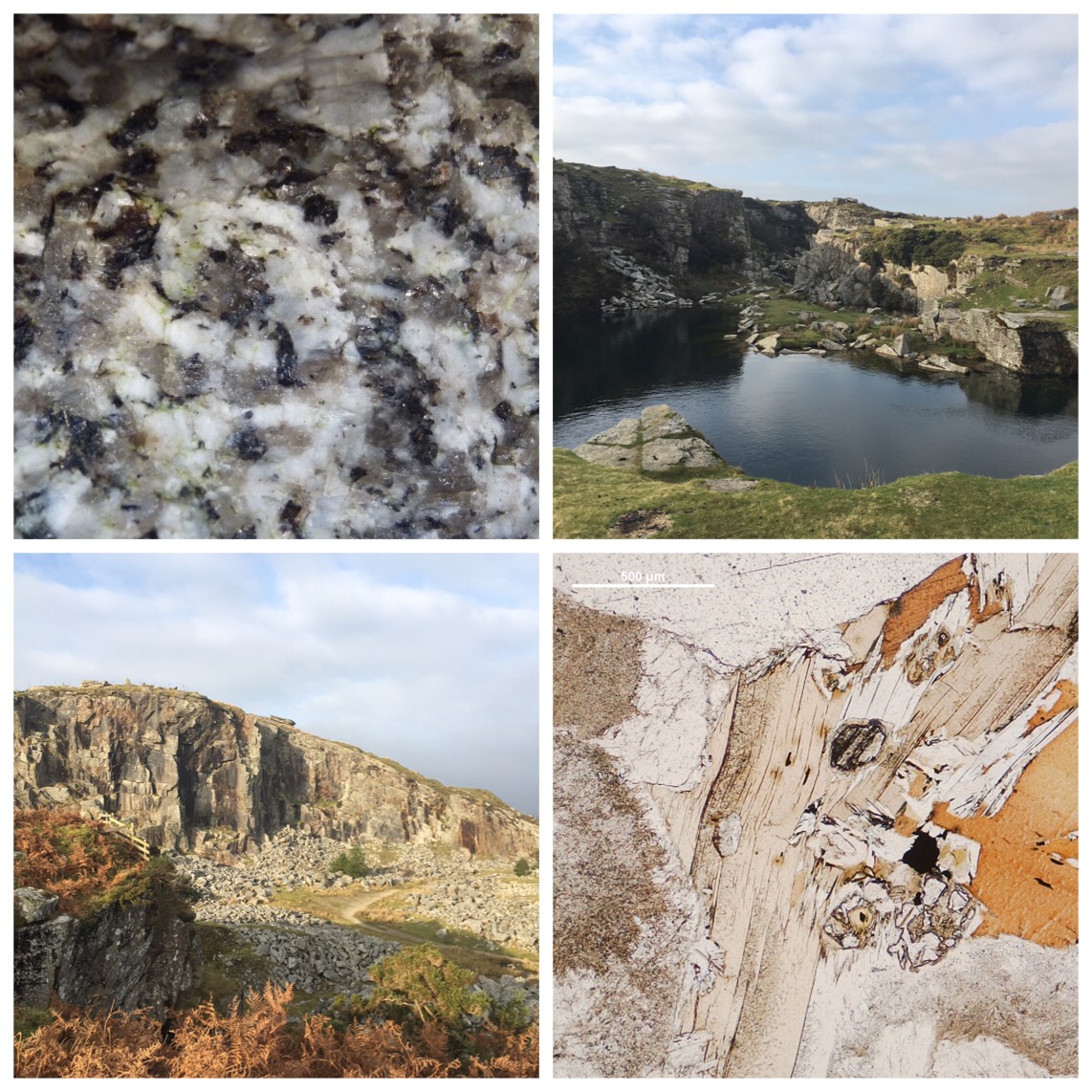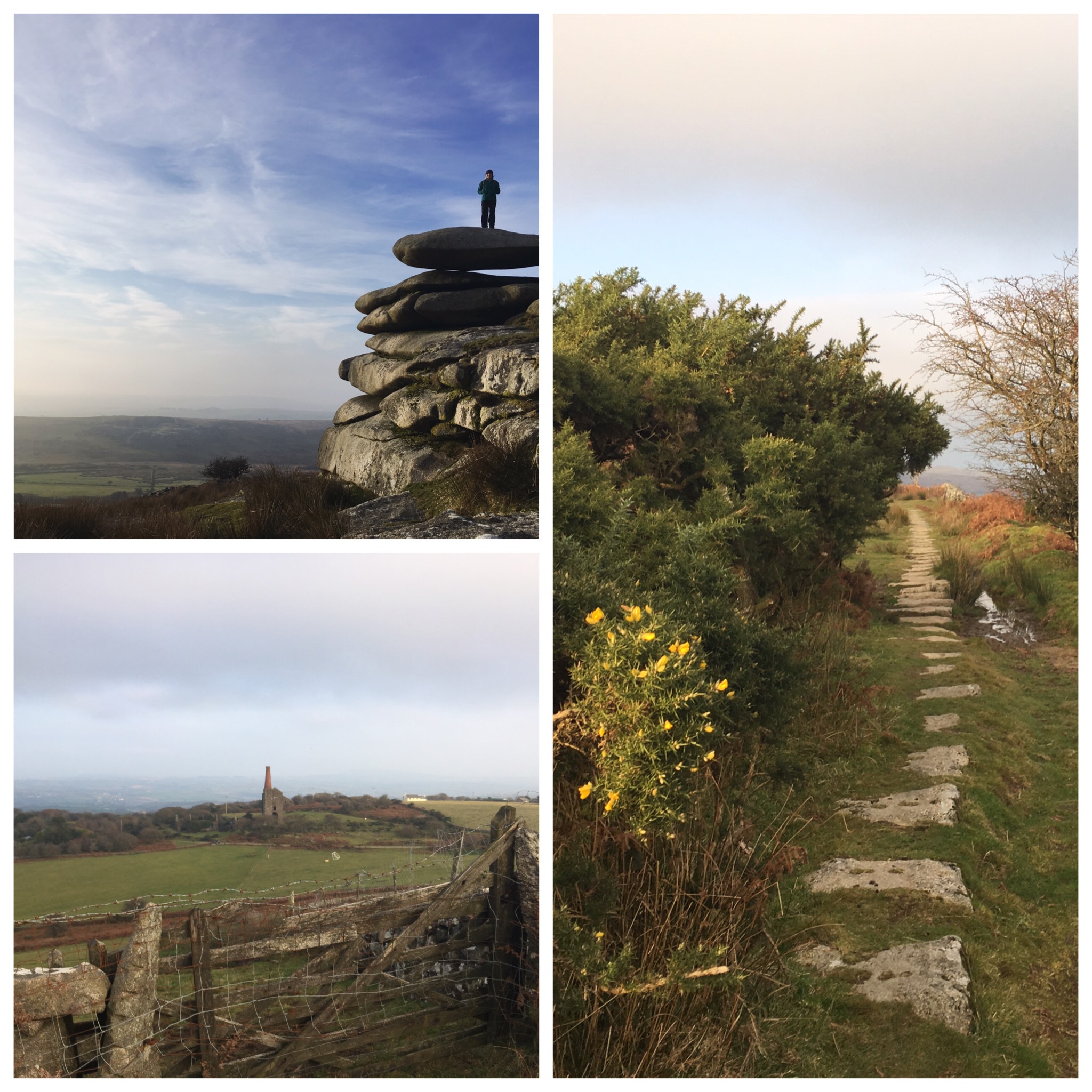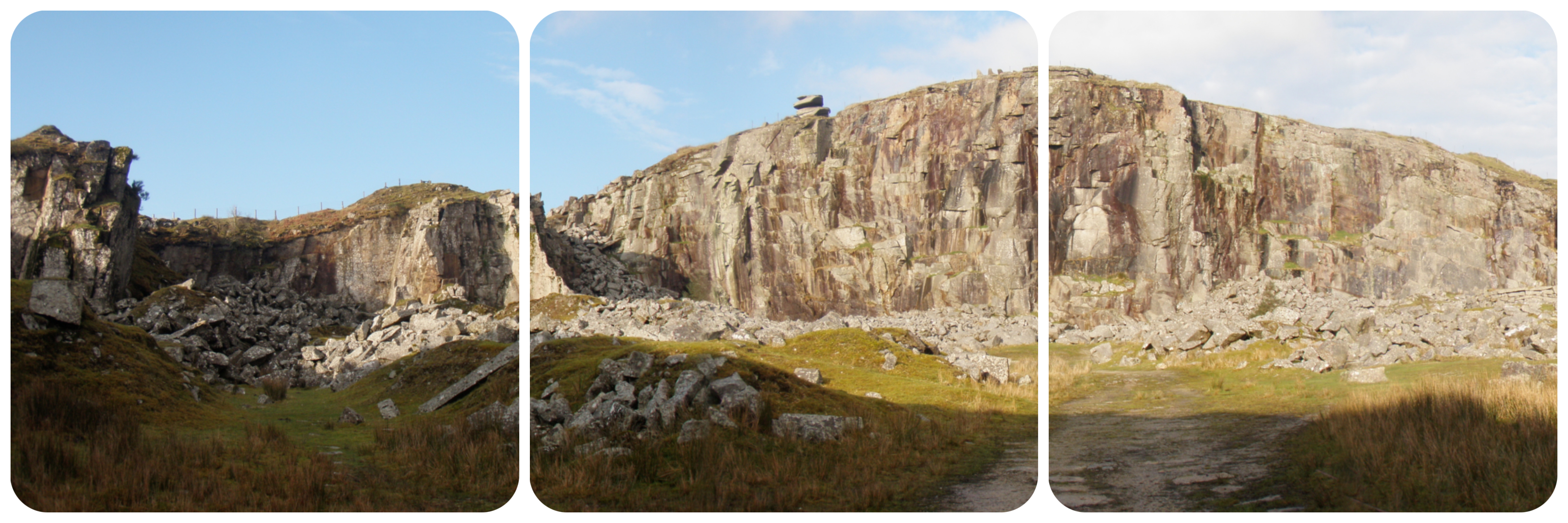Originally published on allaboutgranite.wordpress.com (previous blog) on the 26th November 2016.
Today I’ve been for a stroll on Bodmin Moor, which is a granite moorland in eastern Cornwall, SW England, and represents one of the major granite plutons of the Cornubian Batholith. Bodmin Moor has a rich history and there are numerous remains of ancient settlements and ritual sites including: stone circles, quoits, tombs and standing stones plus numerous stone quarries and old mining sites. The walk started out from the village of Minions and this part of the moor is part of the Caradon Mining District, one of the 10 mining districts making up the UNESCO Cornish Mining World Heritage Site (http://www.cornish-mining.org.uk/). The old South Phoenix engine house has been converted into a heritage centre and is worth a visit.
The Hurlers (An Hurlysi in Cornish) are a group of three Neolithic / Bronze Age stone circles near the village of Minions on the south eastern corner of the moor. Nearby there are two standing stones, known as the pipers. Local legends say that the Hurlers are men, turned to stone for playing the ancient Cornish game of hurling on a Sunday. The pipers suffered the same fate for playing their tunes on a Sunday. The stones are made of granite, similar in appearance to surrounding Bodmin Moor Granite, although a recently excavated standing stone appears to have come from outside the area (see http://www.readingthehurlers.co.uk/ for more).

Nearby, there are two old granite quarries, both quarrying the coarse-grained, grey two mica granite that is found across the Bodmin Granite. The Gold Diggings Quarry towards the west is now flooded, but the Cheesewring Quarry is accessible and is now a popular climbing spot. It’s named for the tor on the top, which is itself named after a press used to make cheese! Stone from this quarry was used in the construction of local houses and mine buildings, but also made it to London; Tower Bridge is built using Cheesewring Quarry granite [http://tinyurl.com/jqlkx98].

Down from the Cheesewring Tor are the remains of granite stone blocks forming the old Liskeard and Caradon mineral railway and engine house and buildings from the South Phoenix mine. Mining for tin (mainly within the granite) and copper (within the killas) here began in 1836, continuing until . the 1900s. The cluster of mines in this area, including South Phoenix, Sharptor, East Phoenix, Caradon and Craddock Moor extended down to >250 fathoms (>410 m) and were some of the most important mines, particularly for copper, in Cornwall during the 1800s (Dines, 1956). The railway was built to transport ore and quarried stone to Looe, originally by horse and carriage, later by locomotives, and eventually closed in 1917, when it was stripped of track materials to help in the war.

For a walking route taking in these sights see here: http://www.iwalkcornwall.co.uk/walk/minions_and_cheesewring Enjoy!
References
Dines HG (1956) The metalliferous mining region of south-west England. HMSO, London

